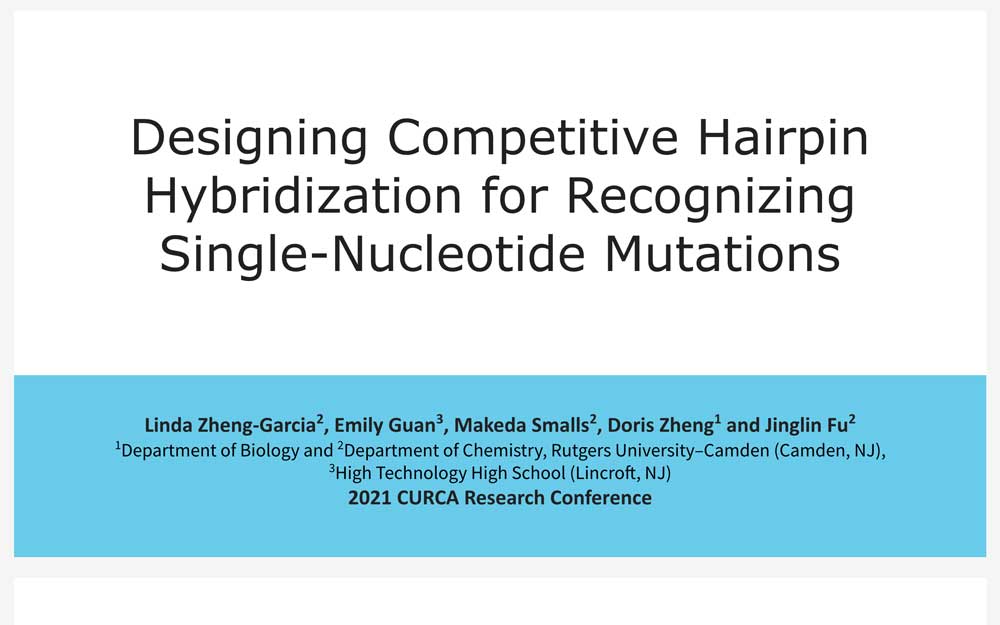Emily Guan (High Technology High School Student), Makeda Smalls ’21, Doris Zheng ’21, and Linda Zheng-Garcia ‘21
Majors: Chemistry (Makeda and Linda), Biology (Doris)
Minors: Business Administration and Chemistry (Doris)
Affiliations: Delta Phi Epsilon Sorority, Omicron Delta Kappa, Honors College (Doris)
Faculty Mentor: Dr. Jinglin Fu, Associate Professor of Chemistry
Abstract
The ability to detect single-nucleotide mutations in nucleic acid sequences is important for disease diagnosis and therapy. One method for such detection is utilizing hybridization differences of nucleic acids. This study explored designs for a competitive hairpin that can either self-fold in the presence of adenosine or bind with a complementary strand. Adding a third competing strand that binds to the complementary strand promotes aptamer self-folding. Mutations on the competing strand affect aptamer folding yield, allowing for mutation detection.
Aptamer folding in the presence of a competing strand was investigated. Computational simulation matching experimental conditions was performed using NUPACK software. Three different designs of the competitive aptamer switch were tested: 11-nt aptamer-complement duplex, 13-nt stabilized duplex, and aptamer-complement with base (triplex design). For the three designs, the aptamer folding yield with and without competing strands (11 to 8-nt in length) were simulated under varying Mg2+ concentrations. Concentrations of competing strands were also titrated. Overall, the duplex designs produced the greatest aptamer folding yield under the presence of competing strands while maintaining sufficient natural folding yield without competing strands. Triplex designs were overly stable and exhibited natural folding yields that were too low. Additionally, the effect of mutations in the competing strand on aptamer folding yield was analyzed. Enhancement ratio (wildtype/mutated) was calculated to measure the difference in primer recognition, with an over 10-fold difference for mutations located in the middle of competing strands. Results show that competing strands had varying levels of success in opening the aptamer-complement duplex. The difference in aptamer folding between wildtype and mutated competing strands demonstrates a promising method for recognizing mutations with competitive hairpin hybridization. The computational analysis in this study can be validated with future experimental results.

